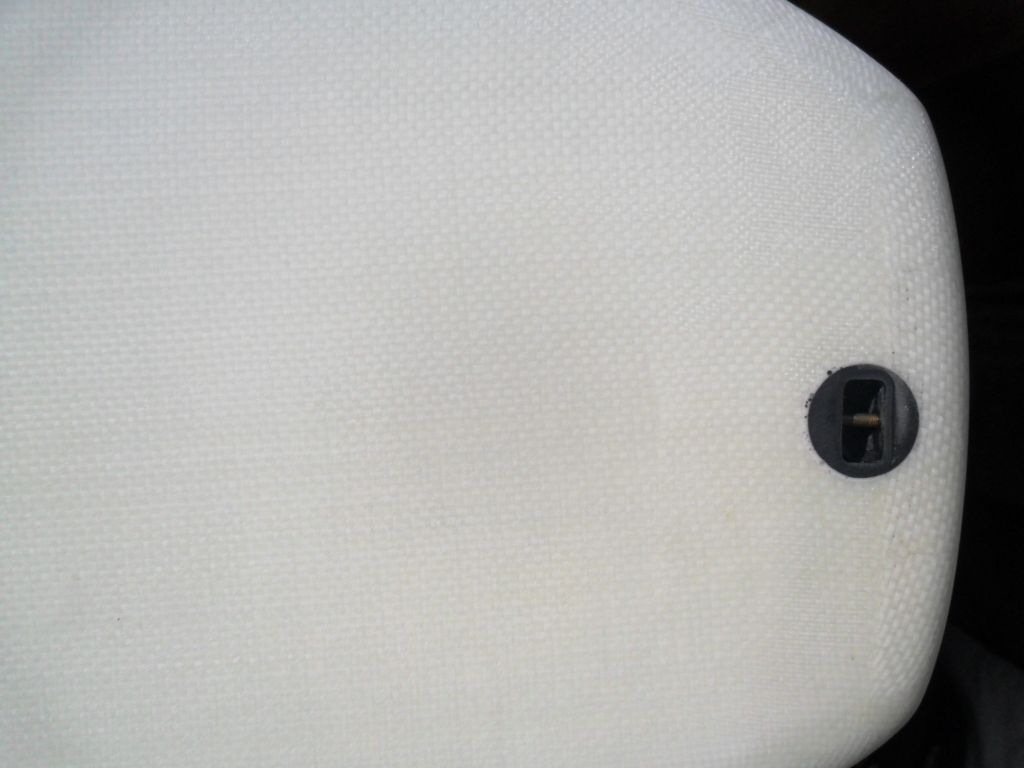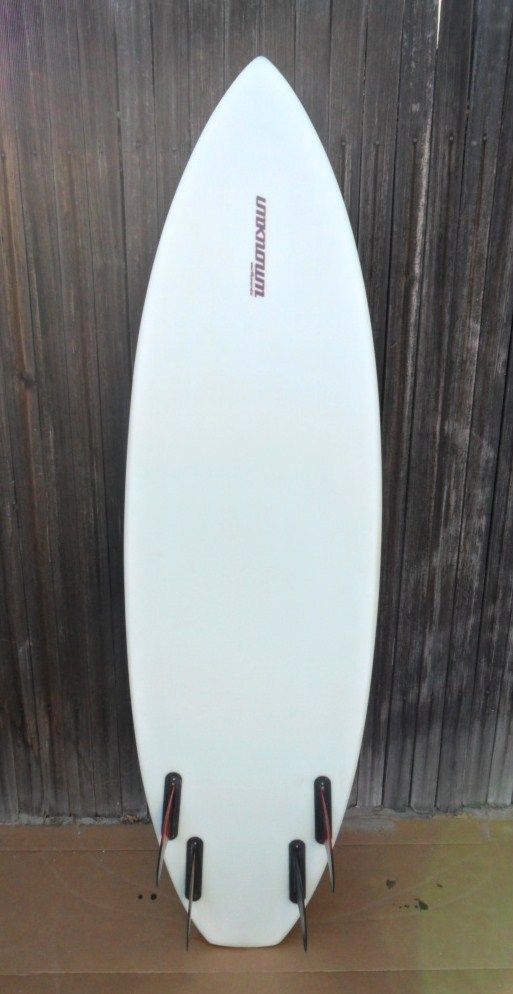I used a vacuum guage to test the capacity of this rig when bagging a 7ft board. The guage said 11" HG and that was including the reserve tank it was attached to (a modified 5 gallon compressed air tank from Harbor Freight) That 11" is less than half of what I was getting out of the 2hp industrial pump I was using before.
It’s all good. I still have an industrial vacuum pump and reserve tank setup on hand for “backup”, if you want to call it that. I did my first few veneers with that rig. But it’s so loud it drove me to distraction. It was kind of a nuisance to set up, too. More pieces and more connections to seal and more chances to leak. Those are the main reasons I switched over to the simpler and quieter setup.
Just a pump, a length of tubing and a 1-piece fixture that can’t leak for piercing the bag. Add a little spray adhesive to the top side of the fitting to tack the bag down over it and seal the edges with some tape - that’s enough to hold the vacuum there. These aquarium pumps are designed to run for at least a couple years 24/7 with zero maintenance. The only pieces that can wear out are the rubber bellows, a replacement kit sells for something like $5.
ACP Composites sells the same type of dual bellows vacuum pump that has about the same specs as the model I’m using except theirs has a metal industrial looking enclosure for the pump instead of the plastic one used for the consumer grade aquarium pumps. If you guys wanna feel more pro you can spend twice as much for that one instead - I’m sure it will work just as well.
I reckon there’s more than one path to the top of the mountain. I am not suggesting that anyone should dump their pro-grade vacuum rigs to go lo-tech. I’m just saying that a backyarder who wants to try vacuum bagging on the cheap can start out with something much cheaper and simpler by making a trip to your local pet store. You don’t need to go running around to Ebay or to industrial supply stores or get involved with wiring switches or gluing up reserve tanks or making enclosures or any of that. No need to go rooting around to source used refigerator compressors or worry about keeping the pump oiled. No mufflers, no bothering the neighbors with a 3-hr run of a pump that sounds like a commercial leaf blower. Intermittant or not the noise is a PITA. These bellows style vacuum pumps are so quiet that if a TV or radio is on in the room I have to pick the vacuum pump up to make sure it’s running.
I set up a small vacuum table for clamping plywood onto G-10 panels and for glassing fins using this rig. Actually, my “table” consists of a 18"x18" piece of rigid ABS panel with plain old masking tape laid down for my “mold release”. I tape my bagging material to the “table” using plain old masking tape. That combo seems to be enough to get the void-free lam down. I just wet my cloth down on a small wetout table (piece of plastic drop cloth taped to a panel of plywood or other flat surface), lay it on my fin panel, tape the plastic film down to the table and draw vacuum. The film smooshes the resin for the no-sand finish and I dispose of it after I use it. I have also used the large-sized zip-loc plastic bags for vacuum film, too - cut the zipper and seams off. One of those zip-loc bags yields two lengths of vacuum film, each big enough to vacuum over 3-4 fins.
I’m thinking about using this setup to try resin infusion over a fin panel.
As for whether 11" from this one pump is enough vacuum, it was enough to clamp a heavy 2mm oak veneer over an 8ft mini tanker without a problem. As I said before, I really don’t want to run too much vacuum anyway, especially when I’m bagging a wet lam. I wanna clamp it in place, not suck it completely dry. Greg Loerh said a couple times not to run full vacuum on 1# and 1.5# EPS otherwise you can collapse the foam. And add twist. He was saying 7-8" for 1# and no more than about 15" for 1.5# EPS. I don’t use 1# EPS so I reckon 11" is enough.
I clamp from the reverse side of the board - i.e., from the bottom when I’m clamping a veneer to the deck. And I use a layer of cheap plastic film (painter’s drop cloth stuff from Home Depot) between the veneer and the bag so as to avoid splinters from the veneer piercing my bag. That keeps all the resin off the bag and makes it last longer, too. No extended breather or expensive peel ply. Clamping from the reverse side means I can smooth out 100% of any wrinkles in my bag - including around the rails - because I’m not putting the intake directly on the veneer or wrapping a breather over the rails. I usually wrap my veneers pretty far over those rails, too - I usually only leave a “lap” line of 1/2" or less.
Anyways, I’m just putting the alternative out there. The pros should definitely invest in good tools, but lo-tech works okay too.










